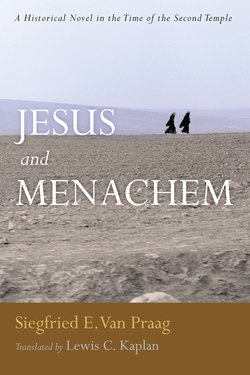Читать книгу Jesus and Menachem - Siegfried E. van Praag - Страница 5
На сайте Литреса книга снята с продажи.
Preface
ОглавлениеCompleted in 1947, Jesus and Menachem generally reflects the knowledge available at that time regarding the life of Yeshua of Nazareth during the period of Second Temple Judaism. Since then, historical research and textual analysis have contributed significant contextual insight and revealed contradictions in the earliest sources that remain unresolved. For example, a reputable corpus of scholarship suggests that the negative stereotyping of the Pharisees (and hence of the Jewish people throughout the Christian era) was invented and the conflict between Jesus and the Pharisees exaggerated or even manufactured to facilitate the spread of the new religion throughout the Roman Empire.
Some historians even hold that Yeshua was a Pharisee himself, albeit a messianic one, and have highlighted the difference between the Hebrew “Moshiach” and the Greek “Christos.” Prominent experts have also pointed to the tolerance of the Pharisees for messianism, illustrated by the great Pharisaic teacher Gamaliel, among both Jews and non-Jewish God-fearers (Noahides) among them. They have also raised serious doubts about the Judas Iscariot narrative and the exoneration of Pontius Pilate, who crucified thousands of Jews in his term as Procurator of Judea, for the murder of Yeshua. They also raise questions about the involvement of the Sanhedrin and the true teaching of Yeshua.
The letters I. N. R. I. (Iēsus Nazarēnus, Rēx Iūdaeōrum), denoting “Jesus the Nazarene, King of the Jews” at the top of the cross on which Yeshua was crucified, provide compelling evidence that his offense in Roman eyes was political and not religious—specifically his claim to kingship of Israel, a correlate of messianism. In other words, Jesus’s messianic claim and that of the Nazarenes was no real religious threat to the Pharisees but was seen as a political threat both to Rome and her Sadducee allies to Rome’s occupation of Judea.
Finally, the character Paul (Saul) of Tarsus occurs in this fictional text as a contemporary of Yeshua—a scenario explicitly denied by the existing theological sources. It has become increasingly clear that Paul never met Yeshua, was not part of the Jerusalem Nazarene Church led by James and Peter, and only entered the picture later, as a rival claimant, after his reported vision of Jesus on the road to Damascus. It is likely that new scholarship emerging in the reborn state of Israel and elsewhere will shed even further light on the emergence of Christianity from Judaism in the Second Temple period.
Kalman J. Kaplan
